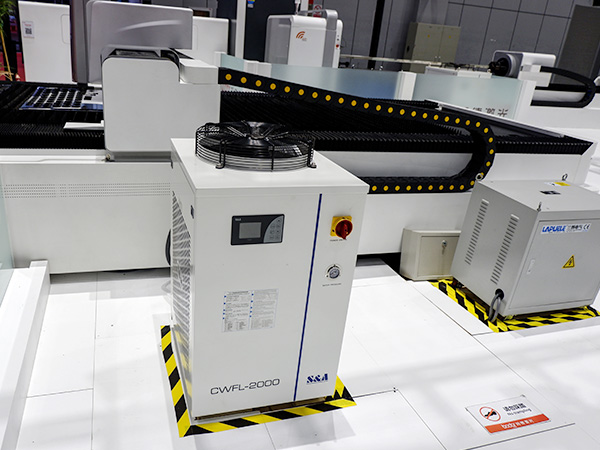Fiber laser cutting machines and CO2 laser cutting machines are two common cutting equipment. The former is mostly used for metal cutting, and the latter is mostly used for non-metal cutting. The S&A fiber laser chiller can cool the fiber laser cutting machine, and the S&A CO2 laser chiller can cool the CO2 laser cutting machine.
The difference between fiber laser cutting machine and CO2 laser cutting machine equipped with chiller
Fiber laser cutting machines and CO2 laser cutting machines are two common cutting equipment. The former is mostly used for metal cutting, and the latter is mostly used for non-metal cutting. What is the difference between the cutting principle of these two cutting machines and their choice of laser chillers?
The fiber laser cutting machine uses a fiber laser as the light source. The high-energy and high-density laser beam output by the laser is concentrated on the surface of the workpiece so that the area irradiated by the ultra-fine focus spot on the workpiece is instantly melted and vaporized to achieve rapid cutting.
The CO2 laser cutting machine uses a carbon dioxide laser tube to emit light, transmits the light to the laser head through the refraction of the reflector, and then converges the light into a point by the focusing mirror installed on the laser head. At this time, the temperature reaches a high level, which instantly changes the material for gas to achieve the purpose of cutting.
Fiber laser cutting machines have great advantages over CO2 laser cutting machines. Fiber laser cutting machines have advantages in terms of beam quality, cutting speed and cutting stability, the service life is longer and the service life of key components can reach 100,000 hours.
The two types of laser cutting machines are different in cutting methods and cutting materials, as well as in the choice of laser chillers to cool them down. The fiber laser cutting machine requires a high cooling capacity chiller due to the high light output rate, fast cutting speed and more heat of the fiber laser, which simultaneously cools the two components of the laser and the cutting head. However, the temperature requirements of these two components are different, and the laser requires a lower temperature than the cutting head. S&A fiber laser chillers can easily meet this demand, with one chiller and two independent refrigeration systems, low-temperature cooling lasers and high-temperature cooling cutting heads, without interfering with each other, and cooling synchronously. The CO2 laser cutting machine can use an ordinary single-circulating water chiller to ensure that the cooling capacity is sufficient to meet the cooling requirements, or you can choose a dual-circulating water chiller to cool 2 CO2 laser cutting machines separately to save costs and reduce installation space. S&A CO2 laser chillers also perform well in these aspects.

We're here for you when you need us.
Please complete the form to contact us, and we'll be happy to help you.










































































































